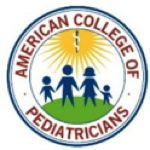

For Immediate Release:
July 11, 2019
Media Contacts:
Donna Harrison, MD, CEO AAPLOG — donna@aaplog.org
Quentin L. Van Meter, MD, President ACPeds — admin@acpeds.org
CMS Re-Releases Protocol That Children Born After Abortion Must Be Stabilized And Treated
The American Association of Pro-life Obstetricians and Gynecologists (AAPLOG) and the American College of Pediatricians (ACPeds) applaud the Centers for Medicare and Medicaid Services (CMS) for re-releasing Department of Humans Services (DHS) guidance to all of its regional centers informing them that hospitals are required to examine and treat babies born prematurely as well as babies born alive after surviving abortions.
“The guidance clarifies that all infants at the point of birth are legal persons,” said Dr. Donna Harrison the executive director of AAPLOG. “This protection has been part of existing law for decades yet has been either ignored or not enforced, allowing children born after abortion to be set aside to die from neglect, or actively killed.”
Dr. Michelle Cretella of ACPeds explained, “As long as US law fails to acknowledge the human dignity of our most vulnerable patients, none of us should consider our own rights truly secure. CMS’s firm stand against infanticide is a step in the right direction. ”
The re-released guidance reiterates the policies and applicable rules of the Emergency Medical Treatment and Labor Act (EMTALA) and the Born-Alive Infant Protection Act. In part it says:
EMTALA requires Medicare participating hospitals (including critical access hospitals) to perform the following:
- Provide medical screening examinations to every individual, including women in labor, their unborn child(ren), and newly born infants protected by the Born-Alive Infant Protection Act when they present for care to dedicated emergency departments, which includes labor and delivery departments, or other locations on the hospital campus;
- Provide stabilizing treatment within the hospital’s capabilities to any individual, including a born-alive infant, with an emergency medical condition;
- If unable to stabilize the emergency medical condition, arrange for an appropriate transfer to another hospital with specialized services for the necessary stabilizing treatment; and,
- Accept appropriate transfers of patients with unstable emergency medical conditions if the hospital has the capabilities and capacity to provide necessary stabilizing treatment.
EMTALA protections start for an infant at time of birth. A newly born infant is presumed to be presenting with an emergency medical condition and requires a medical screening examination to determine necessary stabilizing treatment. EMTALA requires physicians and other qualified practitioners to provide care within nationally accepted standards of practice.
###